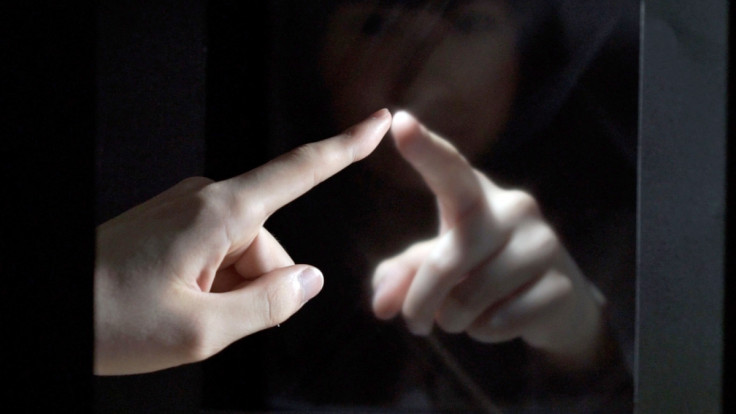Holograms you can reach out and touch developed by Japanese scientists

Japanese scientists have developed a new machine that allows you to reach out and touch holograms by emitting ultrasonic radiation pressure, in the hope of one day making a true virtual hug a reality.
Haptics researchers from the University of Tokyo's Department of Complexity Science and Engineering (DCSE) have built a machine called Haptoclone that can perfectly replicate an object in a workspace field and display a clone of it in a second workspace field, which can be both seen by the naked eye (optical) and touched with a bare hand (haptic).
When a human hand comes into contact with the hologram in the workspace, the Haptoclone system concentrates ultrasound radiation pressure at the intersection between the virtual image and your hand, so you feel contact force from the 3D object.
And if you interact with the object, for example, by nudging an image of a 3D ball on a stand, the system figures out how the force you exerted would affect the hologram and displays and effects of the nudge by making the hologram move.
Stroking 3D virtual images
At the moment, the technology is limited to allowing users to only lightly stroke holographic objects, as the scientists have to make sure the machine only emits radiation pressure that is safe for humans.
"The [level] of ultrasound we're currently using is very safe, but if it's too strong, ultrasound can damage the insides of the human body such as the nerves and other tissues. We have to consider the limitations," Hiroyuki Shinoda, a professor at University of Tokyo specialising in haptics research told Emiko Jozuka of Motherboard Vice.
Jozuka had the opportunity to test out the technology and reported that touching a holographic hand felt like having "strange bubble-like sensations bursting up" his fingertips.
In the long term, the researchers want to make long-distance hapto-optic communications possible whereby you can shake a person's hand virtually or give them a hug, which would add another dimension to Skype conversations with loved ones far away.
Their research, entitled "HaptoClone (Haptic-Optical Clone): Mid-air Haptic-Optical Human-Human Interaction with Perfect Synchronisation" is published in the Spatial User Interaction 2015 Proceedings of the 3rd ACM Symposium on Spatial User Interaction.
The rise of haptics hologram technologies
In the last two years, there has been a great increase in haptics-related research in order to make holograms a reality and make it possible to touch them. In December 2014, computer scientists from the University of Bristol developed the UItraHaptics technology that pulses high-frequency sound waves from tiny speakers, exerting pressure on a person's hand to create the feel of haptic holograms.
Then in June 2015, researchers from four Japanese universities and 3D display firm Aerial Burton published a paper on their work developing visible 3D holograms that were safe to touch in mid-air and visible in broad daylight using femtosecond lasers.
A month later, a group of researchers funded by the European Union revealed that they had created a type of shape-changing display that uses ultrasound haptic technology to let you press and pull at the screen to manipulate 3D images on a flat screen.
Astronauts are also experimenting with haptic pressure – European Space Agency (ESA) researchers on Earth proved in June that they were able to virtually shake hands with a Nasa astronaut 5,000 miles (8,046km) away on the International Space Station using a joystick powered by remote-controlled telerobotics.
© Copyright IBTimes 2025. All rights reserved.






















